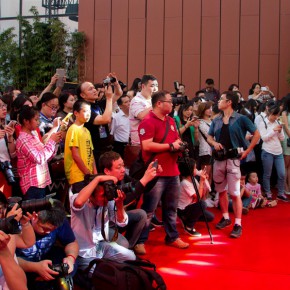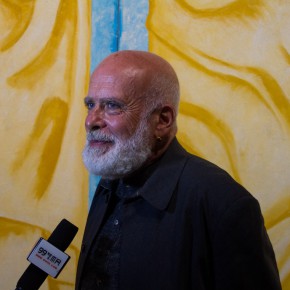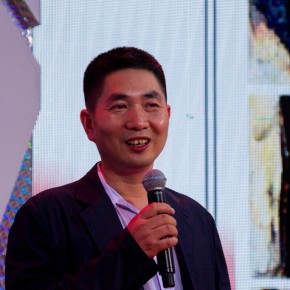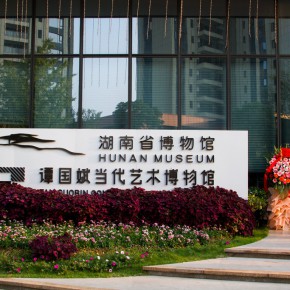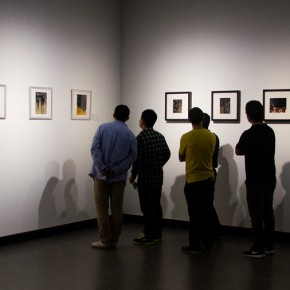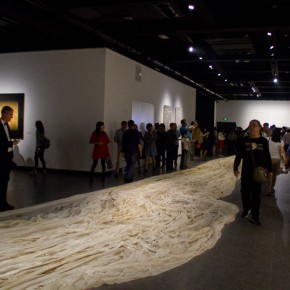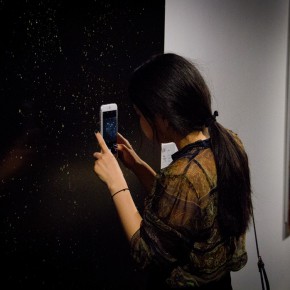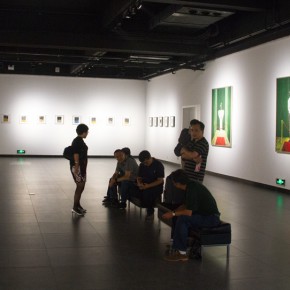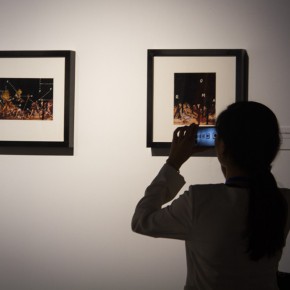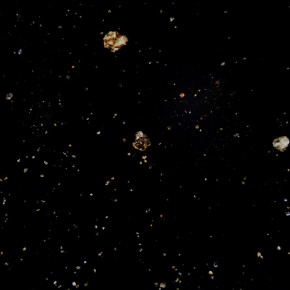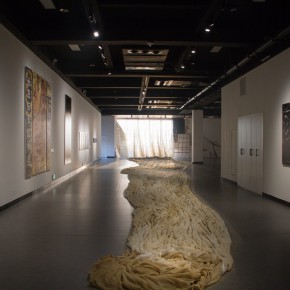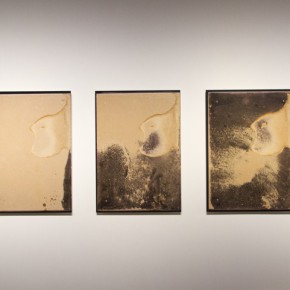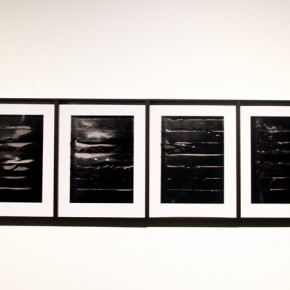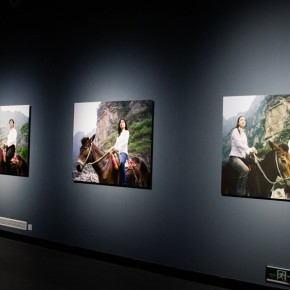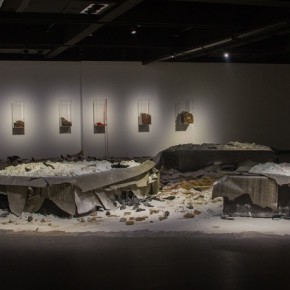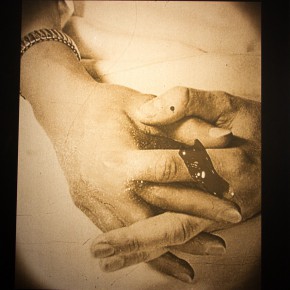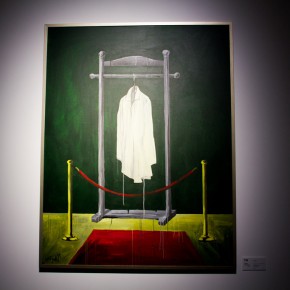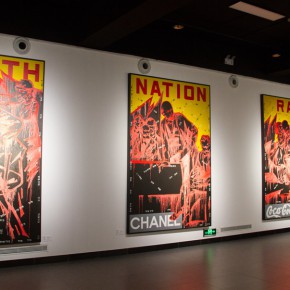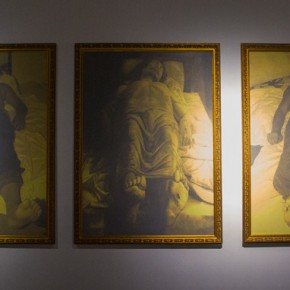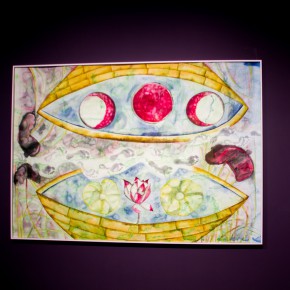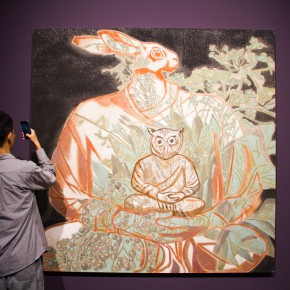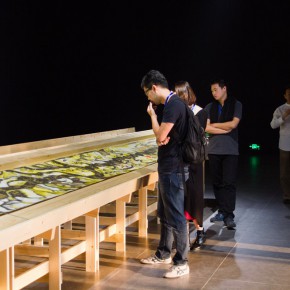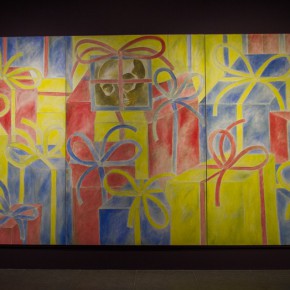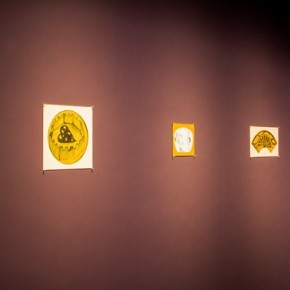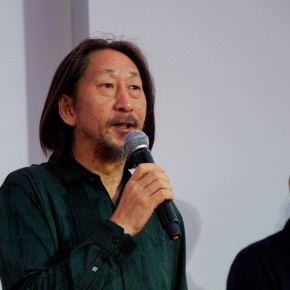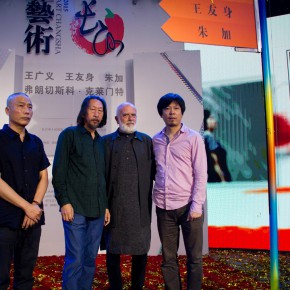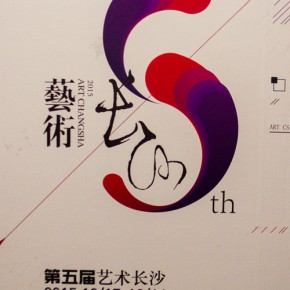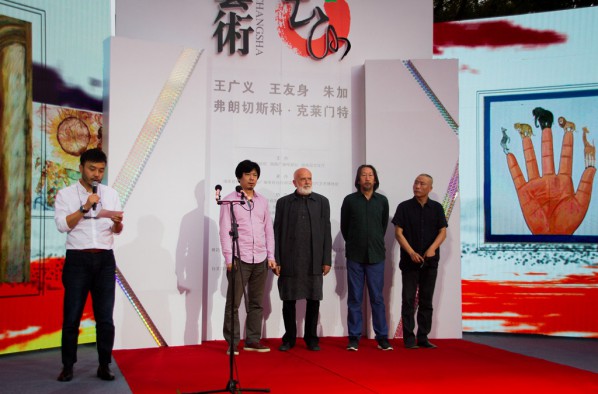
Changsha is not only the entertainment capital of China and it has also gradually grown into an art center in mid-China in recent years, among which, “Art Changsha” has played an important role. The fifth “Art Changsha” was inaugurated in Tan Guobin Contemporary Art Museum in Changsha on the afternoon of 17 October 2015. It was organized by Changsha Municipal People’s Government, Hunan Broadcasting Station, Hunan Provincial Department of Culture, Hunan Museum, Tan Guobin Contemporary Art Museum and was themed “The Bridge Connecting China” and invited Italian artist Francesco Clemente, representative artist of Chinese contemporary art Wang Guangyi, as well as Wang Youshen and Zhu Jia who were influential artists in the field of contemporary art to participate in the exhibition.
“Art Changsha” invited artists such as Francesco Clemente, Wang Guangyi, Wang Youshen and Zhu Jia who have a global vision in ideas, in history as well as in the multiple medias of painting, installation and moving image, they can subtly reflect their features of contemporary art. Francesco Clemente was born in Naples and he is fascinated by the oriental culture, his work is full of nomadic emotion. Also he is recognised as an important artist who represents a return to easel painting and his work has influenced quite a number of young artists in China. Many of the works in this exhibition were specifically created by Francesco Clemente for “Art Changsha” including his Scroll of Xiao Xiang. “Father of Political Pop” Wang Guangyi brought his work The Origins of Immortals to Art Changsha, this work started from his childhood memories, to search for the origins and values of civilizations, and the primitive sense of horror towards Nature; perhaps it will inspire our thinking on the origins of beliefs. His news works Parts of Species were also included in the exhibition. Wang Youshen created The Starry City with the sand and soil along the Xiang Jiang River, this work of a poetic scenario describes a “starry city” composed of minute materials, blown by the historical “breeze” to the exhibition hall decorated with long yarn, corresponding appropriately to the context of “Changsha” and “art.” Zhu Jia exhibited his works including Zero, Waltz, We are perfect—Heroic Taihang Mountain, etc. He recreated a waltz within the context of “the Cultural Revolution” in Waltz while he presented a series of fragmented images without plots by an actress dressing in costumes of various ages in diversified circumstances.
Text and Photo by Zhang Wenzhi/CAFA ART INFO
Translated and edited by Sue/CAFA ART INFO



